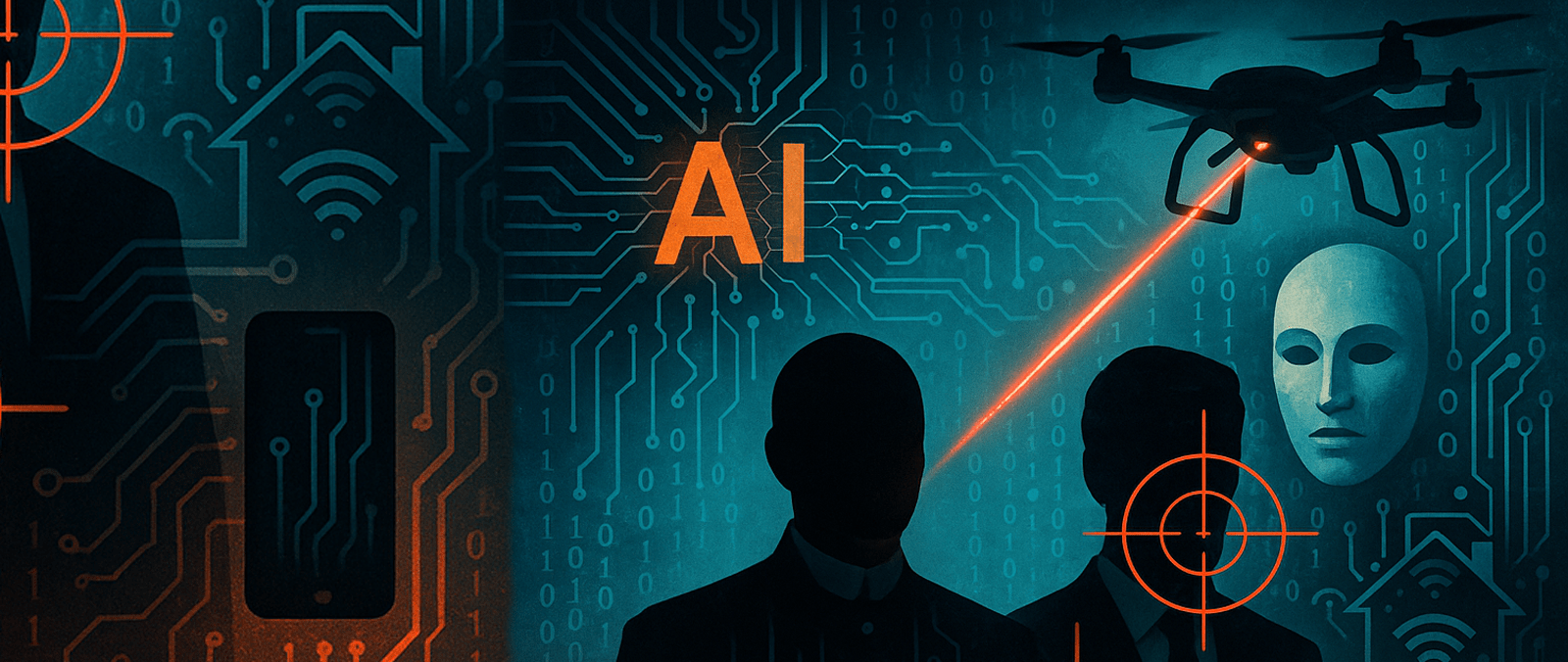In the shadow of AI’s explosive rise, a silent war is being waged—not on borders, but on browsers. And its prime targets? Not generals or soldiers, but diplomats, CEOs, and billionaires.
A growing body of research and real-world intelligence shows that elite individuals are now on the frontlines of cyberwarfare, often without even knowing it. And in some cases, the consequences are life-threatening.
From Hacked Homes to Drone Strikes
The war in Ukraine has provided chilling examples of how digital footprints can become fatal liabilities. Military officials were geolocated and assassinated using signals intercepted from personal devices, including unsecured cell phones and social media activity. Drones, powered by AI-enhanced targeting algorithms, turned that data into devastatingly accurate strikes.
But it’s not just a battlefield concern anymore.
These tactics—developed and deployed in war zones—are now quietly being adapted by cybercriminals and espionage actors targeting VIPs globally. That includes high-net-worth individuals, ambassadors, and corporate executives who often maintain a large online presence and travel with multiple digital devices.
The Attack Surface Has Shifted Home
A recent survey of over 500 U.S. security professionals revealed an alarming trend: 51% reported that their executives had been directly targeted by cybercriminals in the past two years. And nearly a quarter of those had experienced 7 to 10 separate attacks during that time.
Worse still, 68% believe it’s likely that these same individuals are reusing passwords from compromised personal accounts—unwittingly opening the gates to corporate systems.
What’s even more sobering? Many of these attacks originate from compromised home networks, personal devices, and even gaming consoles used by family members. Cybercrime isn’t just breaching companies anymore—it’s breaching living rooms.
Deepfakes and AI Scams: The Threat Is Getting Smarter
One of the most frightening tools now in play is deepfake technology. Attackers can now clone a person’s voice, facial movements, or communication style to impersonate family members, assistants, or fellow executives. According to the same survey, 41% of organizations reported incidents involving deepfakes aimed at their leadership.
These aren’t just clever tricks—they’re often used to authorize fake wire transfers, extract sensitive information, or sabotage reputations.
In one recent case, a senior executive received an urgent video call from what appeared to be their CFO. It wasn’t. It was a perfectly crafted AI-generated replica. The result: a seven-figure financial loss.
Cyber Risk is Now a Physical Risk
Perhaps the most unsettling insight: half of all surveyed security professionals believe their executives may be physically targeted in the future as a result of digital attacks.
The convergence of cyber and kinetic threats is no longer theoretical. If your location, habits, and vulnerabilities are known to a capable adversary, they don’t need to breach a firewall—they just need to launch a drone.
Why Executive Cybersecurity Can’t Be an Afterthought
Despite this rising danger, fewer than half of organizations have incorporated Digital Executive Protection into their security budgets. And only 43% have provided cybersecurity training to their executives—most of it reactionary, coming after an attack.
This gap isn’t just a problem. It’s an invitation.
A comprehensive approach to protecting high-value individuals must now go beyond traditional antivirus software or encrypted emails. It must include:
Hardening of personal devices and home networks
AI-based monitoring and real-time anomaly detection
Deepfake awareness and incident response playbooks
Social media footprint reduction
Digital protection for families, not just principals
Physical and cyber threat convergence strategies
We Are No Longer Watching the Future Unfold—We Are Living It
As AI arms both defenders and attackers, the personal lives of powerful individuals have become open terrain for espionage, extortion, and elimination. What was once a boardroom issue is now a battlefield reality.
If you’re a high-profile figure in today’s world—whether you wear a suit or a diplomatic pin—cybersecurity isn’t just a service.

